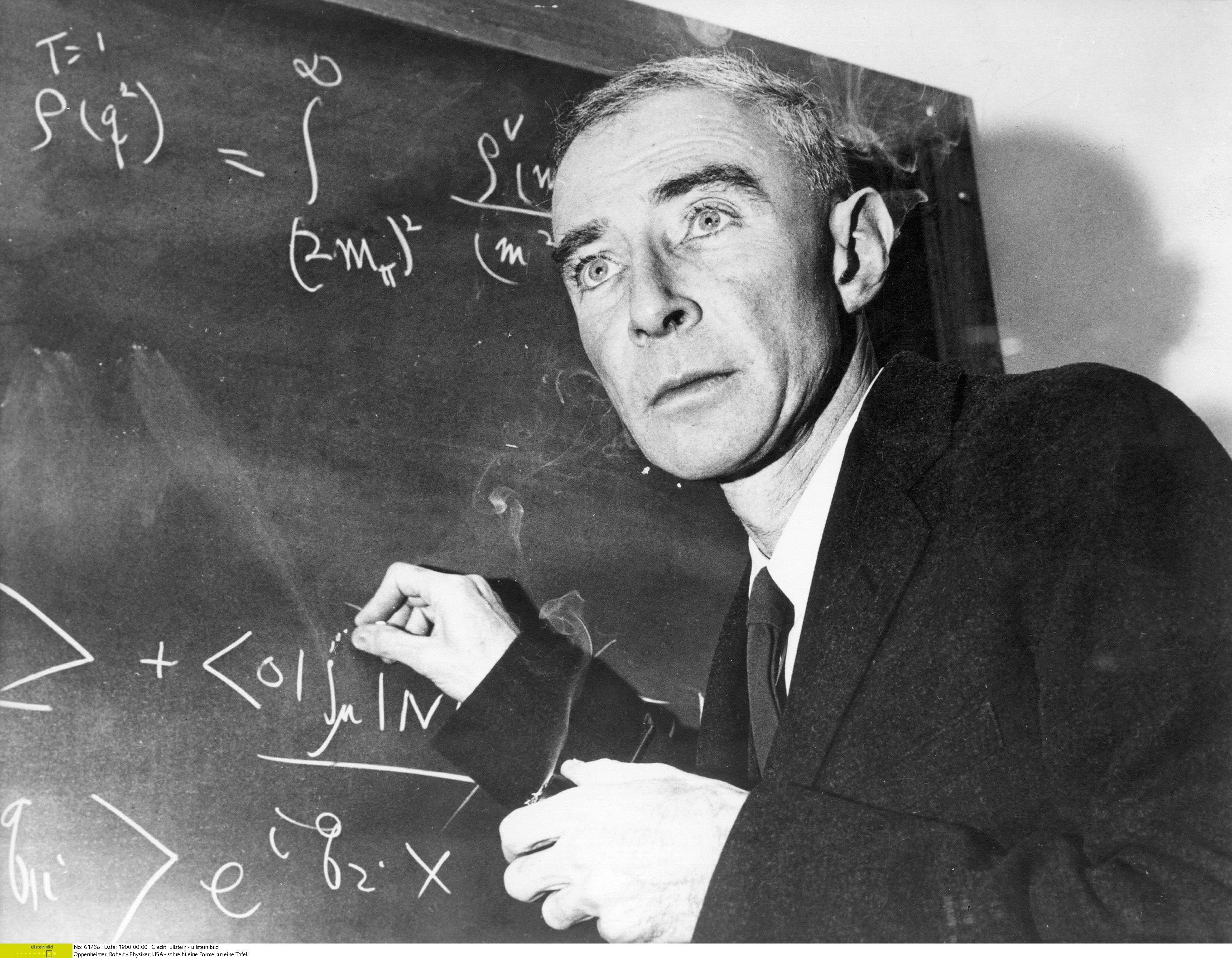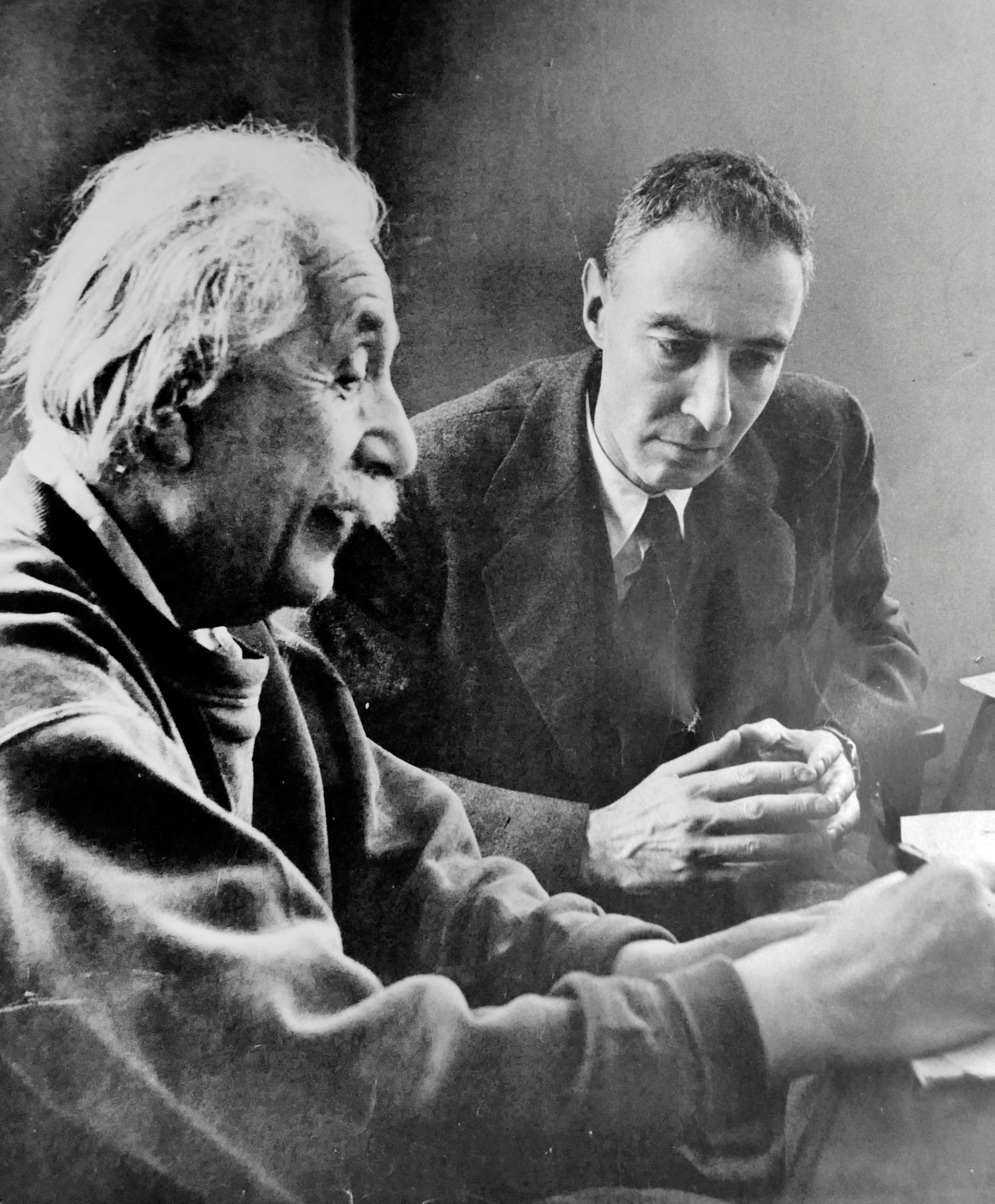
J. Robert Oppenheimer is largely known to history for his work on the Manhattan Project, the US government’s secret wartime nuclear bomb development project. That project would result in the bombs dropped on Japan at the end of World War II, and they ushered in the Atomic Age, the Cold War, and endless iteration of post-apocalyptic fiction. There is no Mad Max without Oppenheimer.
But the Manhattan Project has largely eclipsed Oppenheimer’s previous work on a force even more powerful than nuclear bombs — black holes.
“Everyone knows his name in connection with the Manhattan Project, and that's certainly how I first learned of his name, because I grew up in Oak Ridge, one of the Manhattan Project sites.” Loyola University astrophysicist Robert McNees tells Inverse. But Oppenheimer wasn’t such a specialist in his time before his work on the bomb, working on nuclear and particle physics.
In a 1939 paper, Oppenheimer, then a particle physicist, declared that black holes were the inevitable result of the Albert Einstein’s theory of general relativity, contrary to the hopes of that scientist. Oppenheimer declared, like a few others before him,that black holes weren’t just a quirk of the mathematics, but likely real astrophysical objects — that a star massive enough is destined to implode, creating a trap from which what goes in cannot come back out.
“Mathematically, the work of Oppenheimer and his colleagues was really important to put these on firm theoretical footing,” Sheperd Doeleman, an astrophysicist at the Harvard & Smithsonian Center for Astrophysics and director of the Event Horizon Telescope, tells Inverse.

In the shadow of the bomb
While Oppenheimer may have worked on black holes and atomic chain reactions, McNees says he was a bit of an intellectual nomad.
“He strikes me as one of those scientists who kind of like went from topic to topic and just had very good taste in what he worked on,” McNees says. “He would jump into an area and pinpoint an interesting problem and contribute something, and then maybe end up going on to something else.”
For example, Oppenheimer early work helped establish the concept of the positron, the antimatter equivalent of the electron. He also defined the nuclear process — the Oppenheimer-Phillipis process — involved in the transmutation of isotopes, like Carbon-12 transmuting to Carbon-13.
And then in the late 1930s, Oppenheimer stepped in to tell Einstein he was both right and wrong about the universe.
“In 1915, Einstein posits his equations of general relativity, his magnum opus. A masterpiece that elevates space-time from a stage to a participant in the drama,” University of Waterloo astrophysicist Avery Broderick tells Inverse. The Einstein field equations explained how the mass of matter curved the fabric of space-time, and how space-time in turn told matter how to move.
A year later in 1916, German Physicist Karl Schwarzschild came up with the first solution to the Einstein field equations, “which was pretty impressive, because they're difficult equations to solve,” Broderick says.
But the Schwartzchild solution implies something weird: That you could have a large mass in a single point, a singularity, which would so warp space-time that anything that came within a certain radius of that point would never be able to get out again.
“Everyone kind of chortled and said, ‘Oh, ho-ho, isn't that mathematically curious! But it will never happen,’” Doeleman says. Schwartzchild’s calculations showed that “theoretically, you could have a region of space time that was like a knot that you couldn't untie. And Einstein rebelled against that.”
Despite his crafting the theory of general relativity, Einstein, like many other physicists at the time, assumed singularities were either a mathematical phantom of Schwartchild’s solution, or, at the least, were a condition that nature could never actually enter into in practice.
“Einstein's approach or response to this was very natural, very experienced. He was like,Ah!, this can't happen. Nature will stop this, we just don't know how,” Broderick says. “You know, the universe intercedes.”
But in a 1939 paper entitled “On Continued Gravitational Contraction,” Oppenheimer and his co-author Hartland Snyder showed that a sufficiently massive star, when it exhausts its nuclear fuel, will necessarily contract forever, forming what we now know as a black hole.
“A lot of the things that kind of show up as descriptors and popular accounts of black holes, at least as far as I'm aware, originate in this paper,” McNees says.
For instance: If I were to watch you fly into a black hole from a safe distance, and you were holding up a clock I could see through a telescope, your clock would seem to slow down more and more as you approached the point of no return, known as the event horizon.
“It’s just kind of frozen,” McNees says, such that your falling into the black hole seems to take infinite time, from my perspective.
And even if you did fall in, it would be hard to see, because your light gets stretched out to longer and longer wavelengths — redshifted – to the point of obscurity.
But your experience is different. An observer falling past the event horizon doesn’t notice anything change, McNees says. Their clock runs as normal, and “for them, it happens in a finite amount of time.”
This is an effect of time dilation, which Christopher Nolan incidentally depicted in his early film, Interstellar, when a crew of astronauts spend time much closer to a black hole than their colleagues.

Rediscovering the black hole
These weird findings wound up getting buried for years, thanks to the advent of World War II and the subsequent Manhattan Project, which closed out Oppenheimer’s work in astrophysics.. It would take the work of John Wheeler in the 1950s, and then Roger Penrose and Stephen Hawking in the 1960s and 70s, to pick back up on the work Oppenheimer started and fill in the understanding of black holes we have today.
“It was the 60s and 70s, where people began to see cosmic objects that looked like they might be black holes, and that started a huge observational push to see these things,” Doeleman says.
X-ray and other observations would continue to find evidence gesturing at black holes, but it wasn’t until 2019, when the Event Horizon Telescope (EHT) collaboration released the first image of a black hole, the supermassive black hole at the heart of the Messier 87 galaxy, that we could actually image the event horizon.
The next step in the EHT project is to move from still images to movies, getting a dynamic picture of how matter swirls into the maw of supermassive black holes, and looking for clues that might give to what lies behind the event horizon, according to Doeleman. It could help solve the biggest mystery in physics, how Einstein’s theory of gravity and quantum mechanics, the rules that govern the other forces of the universe, fit together.
“At the center of the black hole at the singularity, that is where quantum physics and gravitational physics, which have never been shown to be consistent with each other, they have to combine,” Doeleman says. “We know that they have to merge. And we have no idea how that happens.”
Legacies
All of that research and the discoveries yet to be uncovered comes to us in part because of the work Oppenheimer did, and for which he is barely known.
Doeleman questions how Oppenheimer himself would see his legacy today, knowing what became of his work on both nuclear weapons and black holes.
”Would he have thought the Manhattan Project was the most important thing? Or maybe he would think, ‘this black hole stuff is pretty amazing. And I'm glad to have been a part of something that went far beyond the Earth, was less terrestrial and more cosmic,” Doeleman says. “We won’t know that, but we can wonder.”







